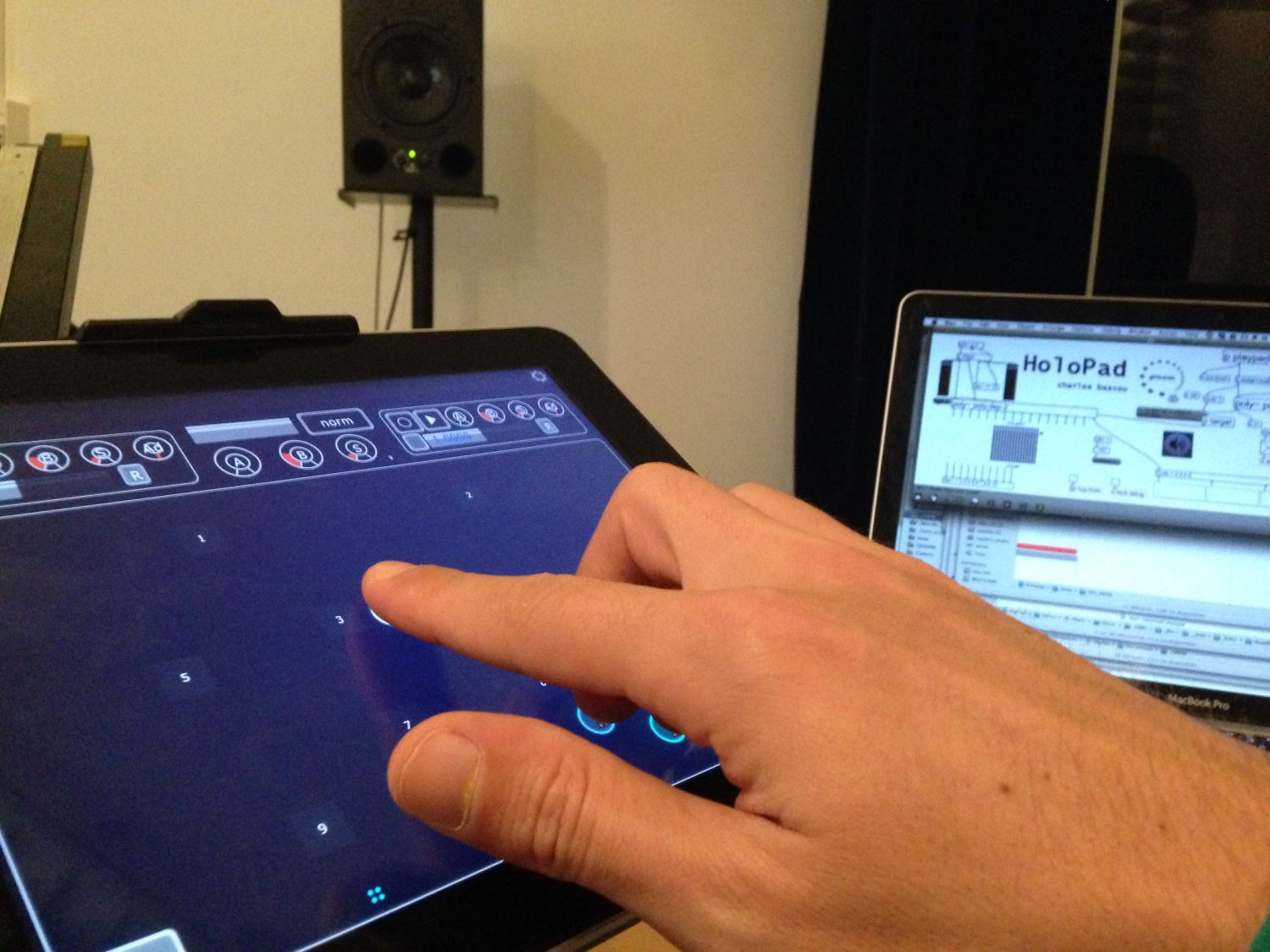
The GMEM - Centre national de création musicale, in collaboration with the Laboratoire d'informatique fondamentale de Marseille and the Laboratoire Jacques-Louis Lions de Paris, is pursuing ProGest, a research project on the extension of gesture on tactile surfaces for musical creation, and is receiving support from the GdR ISIS - CNRS, as part of its exploratory project call.
We have been working for several years on multi-touch interfaces (tablets) for the creation of live control and play interfaces. These interfaces allow an expressive control of the sound spatialization, synthesis and processing, and are thus close to the idea of a digital instrument. In this field, one of the main specificities is to have a direct and real time control, i.e. that a captured gestural parameter is directly linked to a parameter of the synthesis or processing model. For example, the abscissa of a contact on a tactile surface controlling the frequency of a resonant filter. Another case in point is, for example, the control of a sound spatialization system: a tactile surface represents the broadcasting room seen from above where the points of contact will be as many virtual sound sources.
Direct control is of course interesting, but the addition of functions to control the movements automatically quickly becomes essential (to make a virtual sound source rotate at a certain speed around the listeners for example).
Systems of recording movements and replaying them in a loop have already been tested and show a real interest. But we would like to push the model further. The objective is that the machine can produce movements (or automations) "in the manner of", that the machine can prolong the gesture, in the same style.
In an elementary scenario, I initiate a circular gesture with its own spatial and temporal characteristics on the tactile surface and when I lift my finger, the machine continues this movement by taking up these same characteristics.
It can (or even must) make variations from the initial gesture, we are not in the idea of recording/playback but in the idea of characterizing the gesture made by the user and the continuation of its realization by the machine.
There can be in the type of gesture to be recognized an idea of cycle, of search of periodicity, but not only. For example, a "random tapping" on the surface should be able to be characterized by these random properties and not in an idea of cycle.
Progest - First Results #3+ from GMEM on Vimeo.
